20 thing to do in Milan (by Time-out)
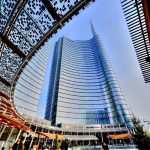
Famous for its football, fashion, furniture, food and unparalleled frescoes, Italy’s most dynamic city combines history and culture with high-octane living and style. Essential things to do in Milan include visits to Leonardo’s Last Supper, the Duomo rooftop and La Scala Opera House. If the timing is right, catching a match at the world-famous San Siro football stadium (home to Internazionale FC and AC Milan) might be an option; and there will certainly be time for hunting down the best discount fashion outlets in town. In the run-up to the food-themed Universal Exposition (to be held from May 1–Oct 31, 2015), Milan is buzzing with new museums, skyscrapers, restaurants, bars and shops. Long-standing monuments – from the 500-year-old Duomo to the Galleria Vittorio Emanuele II shopping arcade – are getting a spruce up, top chefs are opening gourmet restaurants (as well as more affordable alternatives) and there’s a veritable frenzy of big-brand flagship store openings in the aforementioned Galleria and the glitzy designer shopping district known as the Golden Rectangle. Happy hour (a chance to down cocktails while grazing on generous buffet snacks) has long been a tradition in Milan and there are numerous notable new bar openings in the Porta Venezia, Brera and Navigli zones.
Duomo
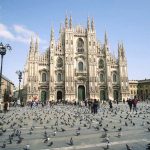
500 years in the making, the spiked gothic cathedral that is the Duomo has been compared to a wedding cake and a ‘hedgehog’ (D.H. Lawrence). Its imposing interior contains some magnificent treasures but, for a truly breathtaking experience, climb the 150 steps (or take the lift) to the roof. Here, visitors can admire some of the 3,600 statues and 135 spires, many carved from pink Candoglia marble – and get a closer view of the famous gilded copper ‘Madonnina’ atop the tallest spike. On a fine day, the view stretches far beyond the city to the snow-capped Alps.
The last supper
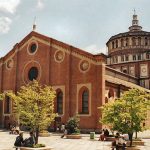
“The Last Supper” is situated in Milan in the ex refectory near the Sanctuary of Santa Maria delle Grazie. It was painted between 1494 and 1498 by Leonardo da Vinci. The Last Supper shows one of the most important scenes, and the richest in meaning from the Gospel according to John. During “The Last Supper” Jesus announced to his apostles that one of them would betray him. The gestures, expressions and postures of the Apostles render them extremely expressive. The figures show their shock and their anguish at what Jesus tells them. They wonder who the traitor will be and what is the real significance of the words used by Jesus. Thanks to Leonardo’s experimental technique, the fresco is famously flaky – but that doesn’t detract one iota from the experience of seeing it in the ‘flesh’.
Teatro alla Scala
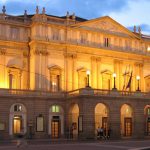
La Scala (abbreviation in Italian language for the official name Teatro alla Scala) is an opera house in Milan, Italy. The theatre was inaugurated on 3 August 1778 and was originally known as the Nuovo Regio Ducale Teatro alla Scala (New Royal-Ducal Theatre alla Scala). The premiere performance was Antonio Salieri’s Europa riconosciuta. Most of Italy’s greatest operatic artists, and many of the finest singers from around the world, have appeared at La Scala during the past 200 years. The theatre is regarded as one of the leading opera and ballet theatres in the world and is home to the La Scala Theatre Chorus, La Scala Theatre Ballet and La Scala Theatre Orchestra. The theatre also has an associate school, known as the La Scala Theatre Academy (Italian: Accademia Teatro alla Scala), which offers professional training in music, dance, stage craft and stage management.
Sforza Castle
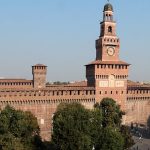
Sforza Castle is the castle in Milan. It was built in the 15th century by Francesco Sforza, Duke of Milan, on the remains of a 14th-century fortification. Later renovated and enlarged, in the 16th and 17th centuries it was one of the largest citadels in Europe. Extensively rebuilt by Luca Beltrami in 1891–1905, it now houses several of the city’s museums and art collections.
Brera art Gallery
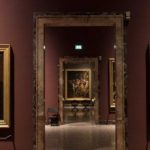
The Brera art Gallery is Milan’s largest art gallery and one of the most important in Italy. The gallery is housed in the Palazzo Brera, once a Jesuit college; the Brera district itself is one of the most chic and fashionable in this most fashion-driven city. The collection grew out of that of Milan’s Academy of Fine Arts (housed in the same building and founded in 1776), and it’s most famous works were acquired successively, with fine collections of Venetian and Lombard paintings from the Renaissance and Baroque periods. Latterly two important collections of modern art have been added to the already impressive catalogue. The gallery is spread across more than 30 rooms on the first floor of the building.
Basilica of Sant’Ambrogio
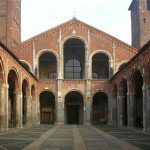
The Basilica of Sant’Ambrogio is one of the most historic churches in Milan. The church is popular for its amazing architectural values, as well as religious and historic significances. This basilica was originally built in 4th century after which it was renovated in 11th century. Its exterior is quite stunning to look at and boasts of an unusually big atrium that further extends to the west and the two towers that are unequal in height. Inside, there is a portrait of St. Ambrose projecting his self. Visiting this place is among the top ten things to do in Milan and visiting this church would be a grand experience. To experience this wonderful architecture, you need to opt for a local bus or cab or metro rail. The place is well connected with all major transport systems of the country and thus reaching here is hassle free.
Hangar Bicocca
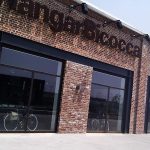
To the north-east of the city centre is this stunning, multipurpose exhibition space of Hangar Bicocca, in a vast industrial site that once was the heart of the Pirelli company’s operations. Its smartly curated temporary shows are certainly worth a look, but the big, and we mean big, attraction is a permanent installation by German artist Anselm Kiefer. The seven concrete-and-lead towers of The Seven Heavenly Palaces are a teetering 15m tall, tucked under the dark blue canopy of the 7000-sq-metre space. The precarious, ruined shells invoke the mythical, mystical yearning of their title as well as the abject destruction of postwar Europe.
San Siro Stadium
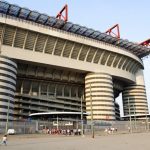
The Stadio Giuseppe Meazza, commonly known as San Siro, is a football stadium in the San Siro district of Milan, which is the home of A.C. Milan and Inter Milan. It has a seating capacity of 80,018, making it one of the largest stadia in Europe. The San Siro is a UEFA category four stadium. It hosted six games at the 1990 FIFA World Cup and four European Cup finals, in 1965, 1970, 2001 and 2016. The stadium is also a lauded large concert venue, with Bruce Springsteen calling the San Siro crowd “the best audience in the world.”
Nightlife in Milan (by Tripadvisor)
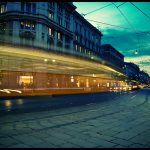
When you think about Milan there is one thing that you don’t have to forget: Milan is not only the capital of fashion, business, but it is also the city in which nightlife means much more than a simple drawn-out dinner. The main two areas to go out in Milan, are: around the Brera gallery and the Navigli area. Milan offers lively bars, restaurants and nightclubs, moreover some of them include live music, especially jazz music and some local bands. Clubbing starts at about 11.00 pm running to about 4 am, but if you want to be ready, start your nightlife with with the happy hour aperitifs, from about 18.00 on in one of the most famous bars and cafés. In milanese clubs the cost of a drink is about 7euro and several clubs have introduce a pay-as-you-leave-system. That is why you receive a ticket at the door that you can use for the cloakroom and it permits you to buy drinks and food. Do not loose this ticket because the fine is very high. Several clubs offer you dinner too, before the nightlife starts. This is an oppurtunity to join together food and live jazz music which is often played during dinner. At least but not the last think about your style because the most important point of going out in milan is to look your best! However if you want to have an alternative scene and less expensive, you should try the Centri Sociali with cheap or sometimes free entertainment as concerts and film showings. They also contain bars and vegetarian restaurants.
